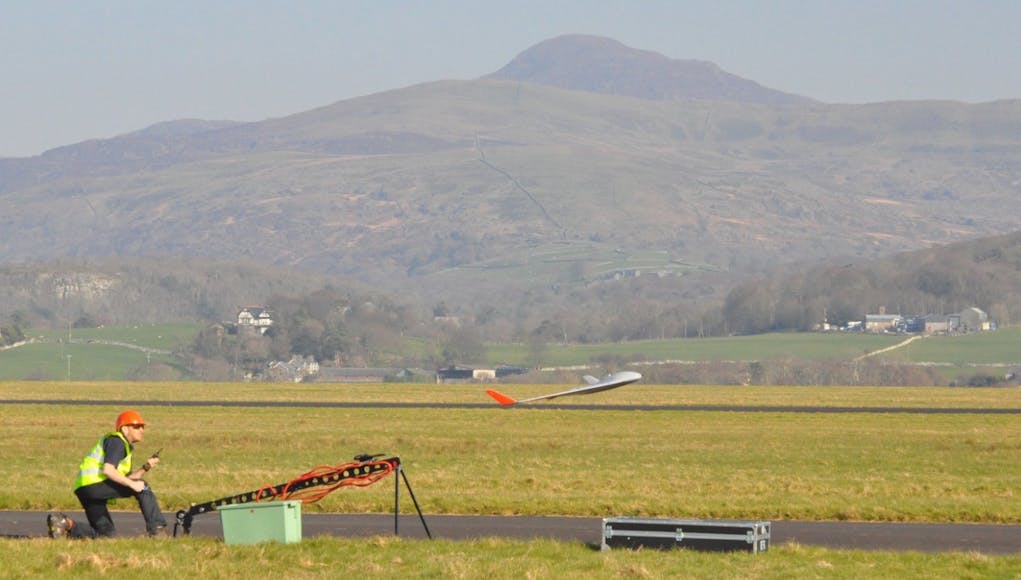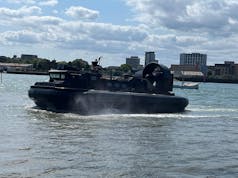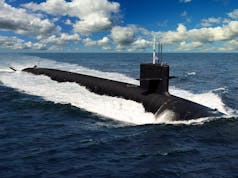QinetiQ is collaborating with the Maritime and Coastguard Agency (MCA) to investigate how drone technology can strengthen their Search and Rescue missions.
Small unmanned air systems are delivering disruptive change across the industry, according to the firm.
“Ten years ago what was predominantly a niche hobby, or military technology, has now found wide commercial success. Anyone can easily have an eye in the sky and recent publicity is changing the way organisations view their problems.”
The Maritime Coastguard Agency (MCA) oversees search and rescue operations in the UK. Their volunteer Coastguard Rescue Teams respond to time-critical calls and work to save lives.
“Funded by QinetiQ’s Internal Research and Development, our search and rescue development programme is exploring how small unmanned air systems, with enhanced information sharing capability can help these rescue teams be more effective and save more lives.”
During recent demonstrations, QinetiQ’s Manned-Unmanned Teaming (MUM-T) solution allowed MCA control room staff in the National Maritime Operations Centre, Fareham, to safely and securely control the sensor of an unmanned system in flight at Llanbedr airfield in North West Wales – over 200 miles away.
The live situational awareness feed, which included marked up imagery, search status and reference points, was simultaneously distributed to multiple teams at the search site in Llanbedr, and to remote sites in Fareham, London and Southampton.
Search teams on the ground were equipped with rugged tablets with moving maps, sensor feeds from the air systems, and search progress information; all enabled by a mesh network that robustly shared voice and data amongst all participants.
Qinetiq say that the lessons learned from this activity have generated insight into how to effectively deploy small unmanned air systems in future search and rescue missions.
Phil Hanson from the MCA said:
“The MCA is always looking to understand how new technologies and ways of working can improve the effectiveness and efficiency of the services we deliver whilst reducing risk to our personnel. This joint activity enabled us to gain a much deeper understanding of how information collected by unmanned systems can be shared effectively throughout our organisation and beyond.”
Phil Briggs UAS Technical Lead for QinetiQ said:
“Projects like this demonstrate how search and rescue can be transformed for future operations. The successful joint demonstration highlighted the increased capability that can be harnessed within critical missions and amplify the efforts of those who are dedicated to helping others. It is extremely rewarding to co-develop solutions with our customers, particularly where the impact can be immeasurable when helping to save lives.”














Could you combine this with a few s-100 camcopters for better SAR around U.K. coastlines. Quicker than just a helicopter. Or keep the helicopters for the rescue part mainly? Also all of our river class OPVs should have them, unarmed or armed with a martlet too.
This kind of work should be funded from the oversea dev fund imo. I would also like 1 or 2 ships like RFA Argos funded from the same budget to be a carried for these types of technologies but neither will ever happen.
THis all sounds like the way ahead, until you introduce a helicopter into the same piece of airspace….
The C130j aircraft can do search and rescue perfectly, the US coast guard uses them in that role. We should convert a couple for that role, or even gift the Coastguard a couple, but no doubt we wont have enough aircraft for that now. And I’m not sure the coast guard has funds for that type of aircraft upkeep ect but it would be perfect for the North Atlantic missions.